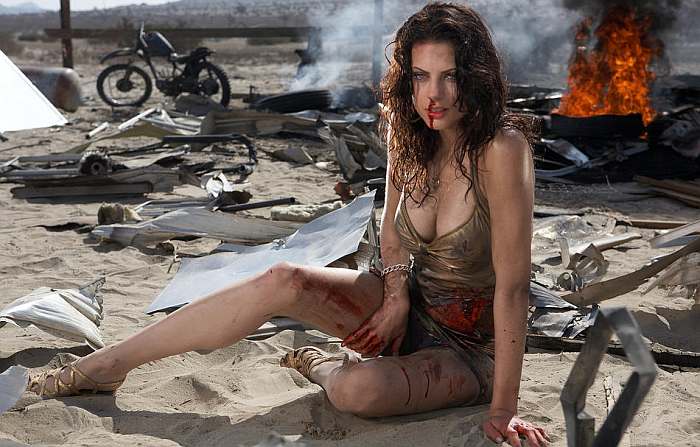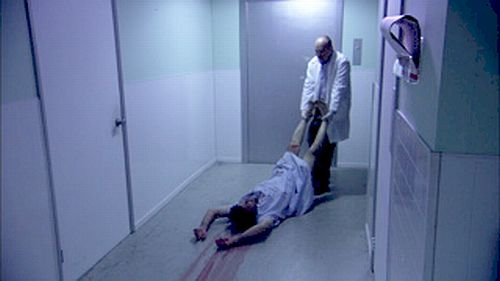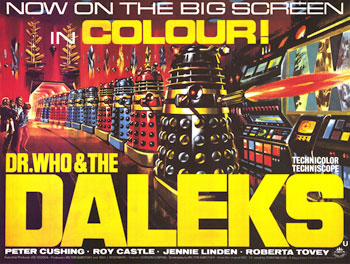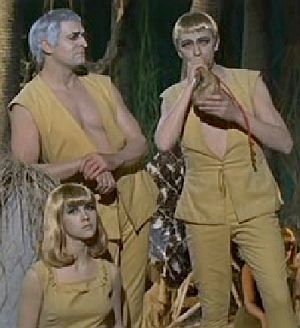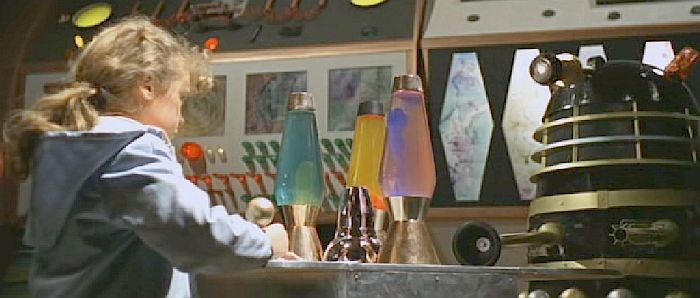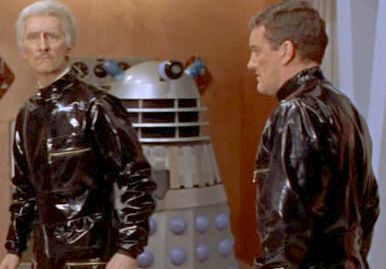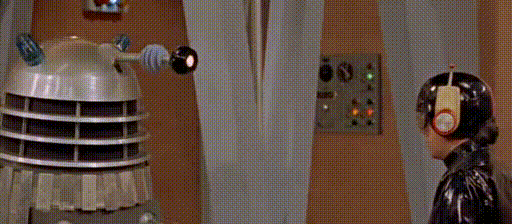TC’s Ten Best Films of 2010
If it weren’t for the expected heady delights of Zach Snyder’s Sucker Punch, it would be quite feasible to imagine a 2011 where I don’t bother going to the movies. We all but abandoned that this year, the previous issues of increasing cost, decreasing quality of cinematic experience and the rise of alternatives, all combining to work against it. With a broad seam of “treasures” from previous years waiting to mined from sites like Cinemageddon, why bother with new movies? The does make the creation of a list like this difficult, since the number of films which qualified as “2010” was probably an all-time low, even with a deliberately-vague rule on what counts. Next year “of” may be be replaced by “watched in”.
The split of how the ten were obtained is interesting. One was seen at the cinema; two were DVD screeners; two were part of our film festival; and the other five were… Well, for legal reasons, let’s just go with “not”, shall we, and I won’t say which was which. As an aside, I note that the most-pirated movie of 2010 was Avatar…which was also the most-bought DVD of 2010, with sales numbers basically the same as the most-bought DVD of 2009. And, even if you reckon every single one of those downloads personally cost Jim Cameron $10, the total amount lost was less than 6% of the film’s worldwide gross. Yeah, piracy really is bankrupting the movie-industry, isn’t it? </rant> And with that, let’s move on, shall we?
Here’s the list of my ten favorites from the year just past. Links go to the appropriate review: titles marked with a * are over on GirlsWithGuns.org, so those reviews will pop open in a new window.
10. The Shadow Within
I said this quietly understated horror flick “reminded me of Sapphire & Steel,” but I probably should have clarified, to avoid any confusion, that this was a good thing. Most low-budget horror films tend to go for the basics, like slashers, so it was nice to see one that had a spot of invention to give the viewer. Summary: “Managed to overcome the obstacles and deliver something that’s generally successful and occasionally quite chilling.”
9. Harry Brown
This Michael Caine vehicle likely got some quality rub-off from having watched Get Carter earlier in the year, as it feels like an unofficial sequel: Jack Carter, forty years on, now an OAP, yet still capable of being an ultimate bad-ass when necessary. Caine is always a pleasure to watch; like Sean Connery, he is now such an iconic figure, he really doesn’t need to bother. But, unlike Connery, Caine still does. Summary: “Shallow, fearmongering exploitation with a heart”.
8. Inception
The jury is still someone out on this one: when I get round to seeing it again, it’s possible the film could move up the list, if I appreciate its depths, or drop off entirely, as I realize it is pretentious bollocks. It was certainly nice to see a full-on Hollywood blockbuster that spends $200 million to fuck with the audience’s head. David Cronenberg is wondering where he went wrong. Summary: “Nolan is playing with chess pieces, shuffling them around a board of dreams.”
7. Mutant Girls Squad*
Part of the new wave of uber-splatter that has been coming out of Japan: this and last year’s top-10 entry, Machine Girl, share a similar gleeful level of completely mad inventiveness, painted with a firehose of arterial spray. This one plays like a Pythonesque version of X-Men, featuring a hiddem race possessing powers that are largely utterly ludicrous e.g. a chainsaw that comes out of your butt. Summary: “Impossible to take any of it seriously, even as it is played completely straight-faced.”
6. The Countess
The most unexpected surprise of 2010 came on the heels of the sub-mediocre Bathory, covering the same historical biography. The difference is that Julie Delpy nailed it with her performance, playing a character often depicted before, but never really portrayed. One of the biggest serial killers of all time becomes almost sympathetic, which is quite an impressive feat. Summary: “While not exactly soft-pedalling the brutality, it’s more of a tragic love-story than anything else.”
5. SexyKiller*
And speaking of amiable serial-killers, here comes Barbara, part-time bubble-headed student of medicine and dedicated follower of fashion, part-time cold-hearted psychopath. But just when we’re getting used to that, the whole thing becomes a zombie film, in what must be the most abrupt right-turn since From Dusk Till Dawn. Summary: “I just loved the unashamed nature of it all: Barbara is perfectly comfortable with who she is, and is in no need of redemption.”
4. La Horde
The zombie movie truly is international, and this French entry got back to basics: a bunch of ill-fitting companions, thrown together in a confined space, thanks to and having to deal with the presence of ravenous hordes of undead. If slightly too derivative of Romero’s original [especially at the end], I thoroughly appreciated the stripped-down approach. Summary: “Drawing the characters efficiently, in a few short brush strokes, and then getting on with the horror and action.”
3. You, the Living
One of those films which largely defies description, this makes Inception look like two hours of webcam footage, in terms of interconnected narrative. Scenes start in the middle, stop in the middle, and link into each other with the kind of logic that only appears in dreams. It should be enormously irritating as a result, yet there’s a genuine sense of human warmth pervading it. Summary: “When it works, it works beautifully, with a deadpan sense of dark humour that feels similar to Aki Kaurismäki
2. Bitch Slap*
Chris bailed entirely on this, 20 minutes of sarcasm e.g. “Would you rather watch this alone?”, into this grindhouse beat-em-up, with the throttle stuck open. It’s closer to Faster Pussycat than anything else, as three women head out to the desert for a stash of treasure, only for their relationship to fall apart in brawls and treachery. Summary: “Alcohol will probably help the neurons go in the correct direction, as will an encyclopaedic knowledge of pop culture, and tolerance for trash at an industrial concentration.”
1. Shellter
If you look at our number ones for the past couple of years – Martyrs in 2009, and 2008’s Sick Girl – you’ll notice both are hardcore horror with a philosophy, and Shellter is cut from much the same cloth. It doesn’t pull its punches and is often difficult to watch; yet it forces you to confront uncomfortable realities about humanity in general, and yourself in particular. How far would you go? Summary: “It’s probably no coincidence that the director has a master’s degree in psychology – and that’s why I say the film has a philosophy. This is what lifts it up above its retarded cinematic cousins.”


